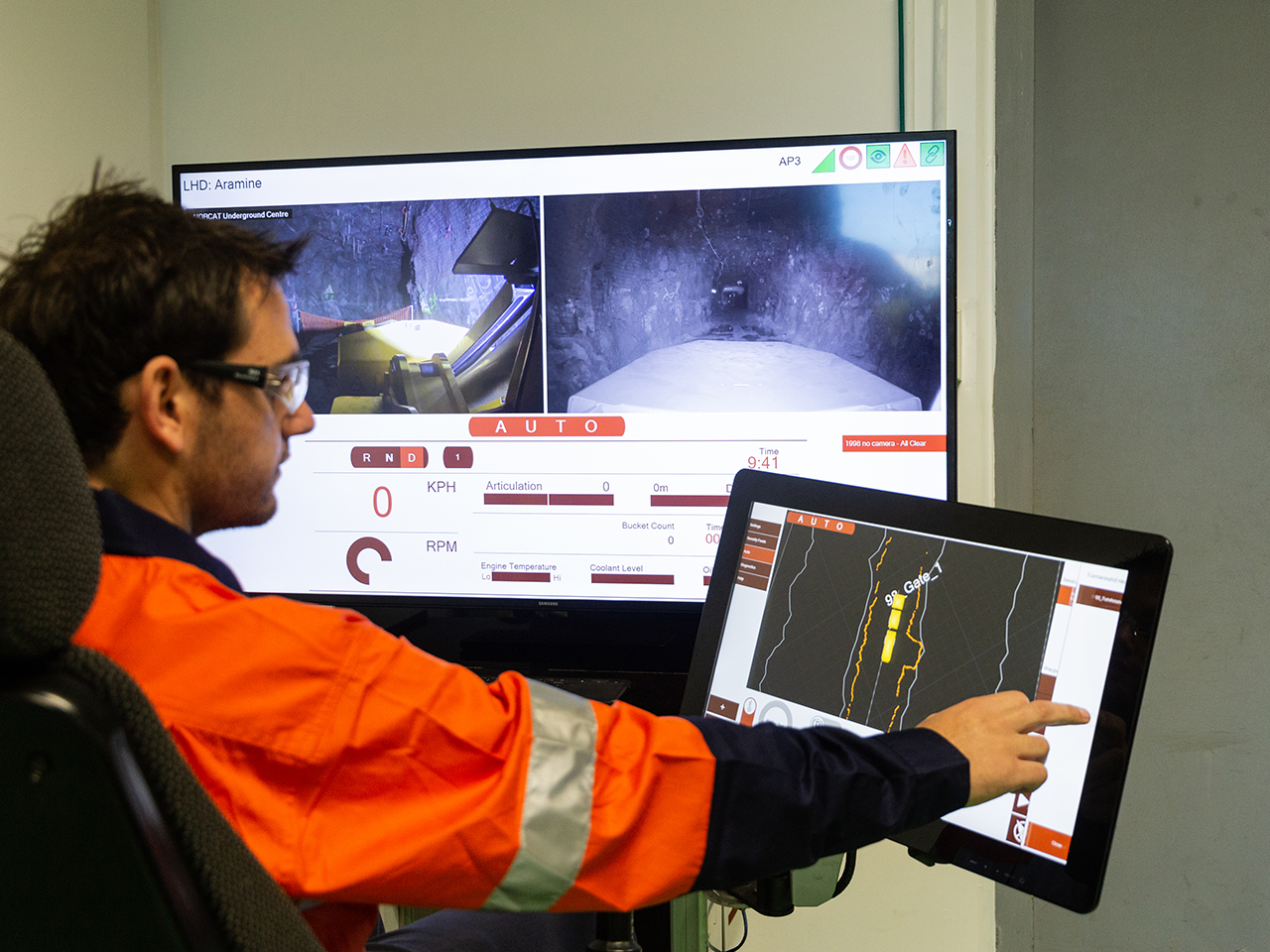Owning and operating one of the larger gold mines in Canada involves far more than producing gold at a rate that earns the miner an international status for being a world-class producer. In fact, gold is almost secondary when it comes to Goldcorp’s Business Plan for also making its Red Lake Mine in Northwestern Ontario one of the safer mines in the world. With a workforce of more than 1,250 people, including contractors on site, the mine covers more than 2,330 hectares within one of the world’s more prolific gold camps.
Located about 230km northwest of Dryden, adjacent to Highway 105 connecting with the Trans-Canada Highway, the Red Lake Mine is also very accessible for the busy year-round delivering of goods and services, and shipping its gold to market. Last year, for example, gold production totaled 375,700 ounces, with an average grade of 18 grams of gold per tonne.
All underground mining at Red Lake is carried out by using three mining methods of ore extraction: Overhand Cut and Fill (OCF), Underhand Cut and Fill (UFC), and Long Hole (LH). The high-grade zone, which primarily consists of a narrow vein system, is mined at the rate of 450 tonnes per day with an average grade of over 45 grams per tonne (1.3 ounces per tonne). Thanks to innovative mining techniques, such as a wet shotcrete system, the use of larger trucks, use of electric-man carriers, and a portable diamond drill mounted on a jumbo carrier, efficiencies at the mine continue to improve. The operation is supported by two mill processing facilities, providing a total milling capacity of 3,100 tonnes per day, including crushing, processing and pastefill plants.
Processing operations consist of grinding, gravity concentrating, leaching, carbon- in-pulp (CIP), carbon elution and reactivation, electrowinning, bullion smelting/refining and cyanide destruction, flotation and concentrate handling—all of which are required to recover the gold. In keeping with Goldcorp’s master plan to continue stepping out in search of more gold, the company’s work on enlarging and upgrading the existing shaft to its neighbouring Cochenour deposit that, once again, serves as a perfect example of this commitment to moving forward. By completing a 6.0-km-long haulage drift between the existing Red Lake underground mine and Cochenour, the haulage drift now enables Goldcorp to haul ore for processing at the existing mill. The drift also opens up exploration of more than 6.0 km of untested ground in one of the world’s richer gold districts. It’s this kind of advanced thinking that’s keeping the company at the top of its game but, regardless, the focus at Red Lake still remains on asset optimization, cost reductions, and most of all… safety. In fact, because of this mandate to expand its footprint, Goldcorp is also transitioning to mechanized mining, bulk mining and material movement automation in an effort to lower mining costs and improve safety. And, it’s because of this business plan that the company is taking major steps towards more autonomous mining because it recognizes the safety and performance benefits it can derive from moving from the traditional methods of operating its equipment.
Because today’s machine operators are generally better than yesterday’s, and tomorrow’s ‘joystick generation’ will be even better than today’s, advances in machine technology, particularly where autonomous operation is concerned, will help make operating mining equipment more user friendly. And it goes without question, that computers, and in particular, computer games and the hand-eye coordination required to play them, is creating an entirely new generation of technically savvy people capable of manipulating their way around a keyboard or joystick like never before. Kent Cook, Superintendent, Operational Excellence, at Goldcorp says, “We have no autonomous equipment yet, but we do have tele-remote control systems known as Teleop from Hard-Line that certainly have the capability to go to the next level of autonomous operation. Our initial plan is to institute the use of teleoperations to bring our personnel, obviously from a safety perspective, in tune with operating machinery from the surface. At present, we have three fully functioning teleoperated scoops in operation at Red Lake Mine.” Cook said that Goldcorp intends to install additional teleop systems over the next few months, and that it will probably consider automating (to some degree) one or more of the systems.
Moving towards more automation naturally involves more training and Cook said, “Goldcorp already has a number of existing underground equipment operators that we’ve included in our regular business practices, and one of those elements is the training element. The training module that we have at Red Lake here typically includes our line-of-sight remote operators familiar with radio remote-operated scoops. Those operators are already familiar with the radio remote world, and they are typically the ones that we target so they go through additional training in which Hard-Line has actually provided us.” But not all Goldcorp personnel involved in the training are seasoned miners. Cook says that while it’s true that most of those that are training on the Teleop system have some form of underground experience, we do have a couple of operators that have very little mining experience and they do just fine with the system.” To reinforce this point, Max Gray, VP, Sales and Marketing for Hard-Line of Dowling, Ontario, says, “The Teleop system provides ultimate safety, even for novice operators, because it enables the operator to control heavy equipment from a safe place, on the surface, far away from where the machinery is located.”
“There’s no operator underground. He or she is driving from the surface using a tele-operational station which is a chair set up with monitors. It’s the ultimate in safety, and it’s important to note that teleop can be used for virtually any type of heavy equipment. It doesn’t matter what it is.”
For example, Kent Cook once again referred to the company’s 6.0-km-long Cochenour drift where; “We have dedicated tramming levels where we’re moving ore via locomotives, underground trains, as it were. We have ore cars and we are designing the system to allow operation of those locomotives so that we can move ore from one ore pass system to another ore pass system 24 hours a day through a teleoperation set up on surface. The operator will be sitting on the surface and operating locomotives and the associated ore pass chutes and dumps from surface.”
Cook further explained that Goldcorp has a teleoperation command centre located right in the heart of the administration building that enables other employees MAY 2016 CANADIAN MINING JOURNAL | 17 to observe the operators working the machines from the Teleop station. This, he says, also works as an informal training session for others who may someday operate underground equipment, even if they have never really touched a piece of heavy equipment. Currently, Cook says, there are five systems (with additional systems being installed) in the command centre controlling the underground scoops, as well as a designated system for the locomotive.
That is one of the distinct advantages of going with Teleop, says Cook. “In an underground mining environment, again, for safety reasons, the mine has to be cleared in order to blast. So, during those blasting windows, we shut down, basically shut down underground operations. And no one is allowed entry until it is confirmed that it is safe to do so. So the distinct advantage of teleoperations is that you don’t have to worry about those windows. You set the equipment up for teleop use, and even if an operator has been running a scoop, for example, through his regular shift in manual mode, manual operation, no radio line of sight operation, he can set his machine up for Teleop, go up to the surface at his regularly scheduled time, and just hop back in the chair and go back to work”
Chad Rhude, Hard-Line’s VP, Production and Design, once again touched on the company’s locomotive project.
“There is quite a bit of automation going into that. The runs between the various ore passes and chutes are automated and we’re using some 3D laser technology to recognize where we are within the drift. The chutes and the operations have some automated features, things like automated ore pass cover. We’ve automated some of the functions so that basically when the LHD comes in to where the ore pass is, the door opens up automatically. The operator can dump, and when he leaves, it closes, so he’s safe that way. And, also from another safety point of view, we work with procedures and a gate system which is monitored by our system that doesn’t allow the overall teleop system to operate unless the gates are closed. Cameras are also used so that we can see the gates to make sure everything is safe.”
And that’s the bottom line.
“Making sure everything is safe,” and it appears to Goldcorp and Hard-Line and its Teleop System are working together to make this a reality at the Red Lake Mine.


